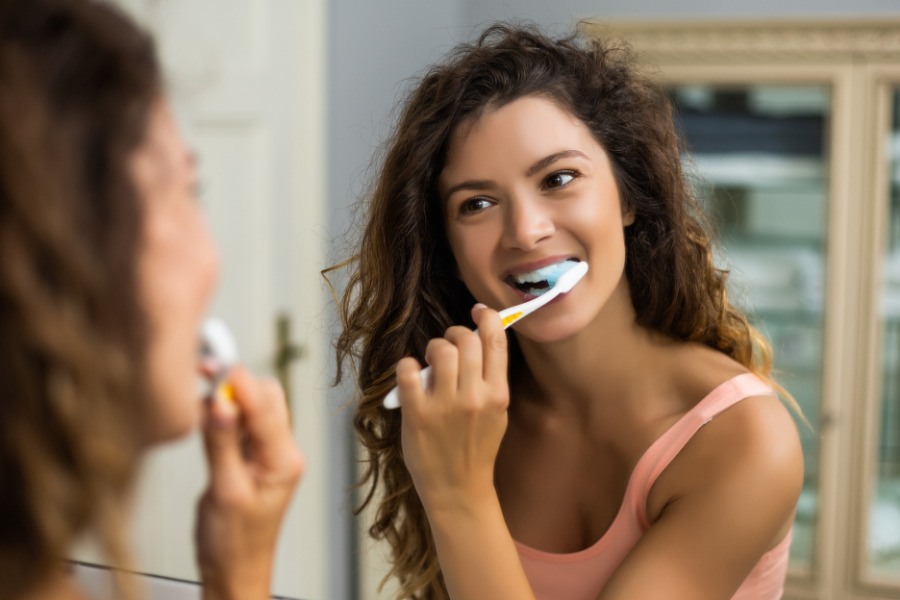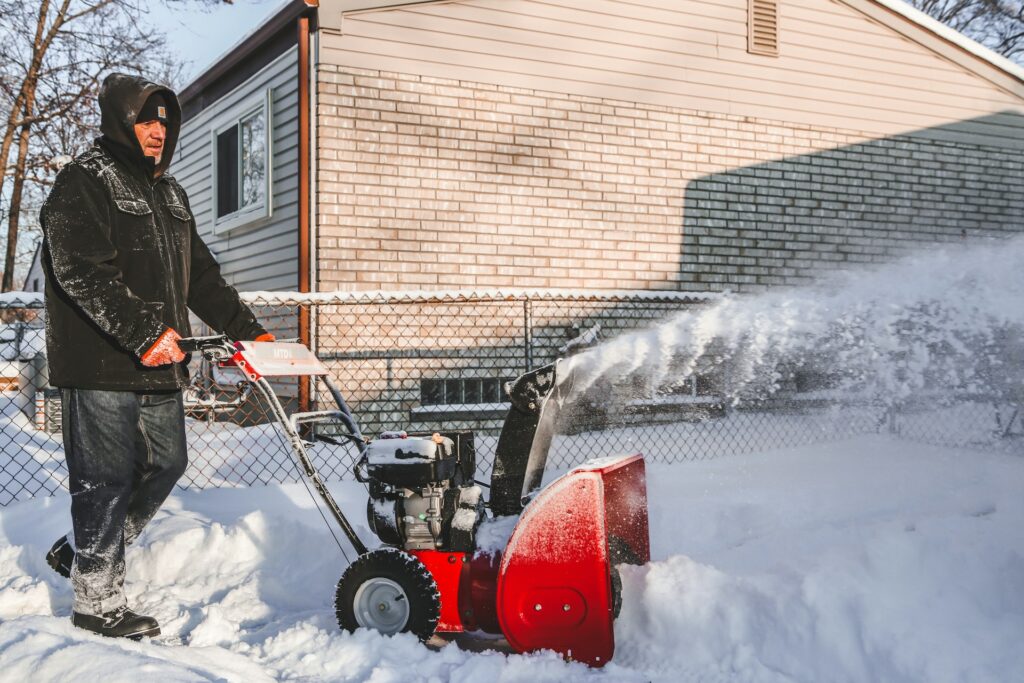Achieving and maintaining whiter teeth requires effective brushing techniques. First, choose a soft-bristled toothbrush to avoid enamel wear and gum irritation. Apply gentle pressure and use fluoride toothpaste to strengthen the enamel. Angle the brush at a 45-degree angle towards the gumline and brush using small circular motions. Pay attention to each tooth’s front, back, and chewing surfaces. Don’t forget your tongue and the roof of your mouth to reduce bacteria causing bad breath. Brush for a full two minutes twice a day, ensuring thorough coverage.
Avoid aggressive brushing as it can damage enamel and cause gum recession. Use a light touch and let the bristles do the work. Incorporate a teeth-whitening toothpaste to remove surface stains gently over time. After brushing, rinse thoroughly with water or an alcohol-free mouthwash. It’s essential to replace your toothbrush every three to four months or sooner if the bristles are frayed.
Maintaining white teeth also involves a balanced diet and avoiding excessive consumption of staining foods and beverages like coffee, tea, and red wine. Regular dental check-ups and professional cleanings are crucial to preserving your smile’s brightness. By adhering to these brushing tips and overall oral care, you’ll be well on your way to a whiter, healthier smile.
Effects of Brushing on Teeth Health
Brushing plays a pivotal role in maintaining optimal teeth health. Regular and proper brushing removes food particles, plaque, and bacteria from tooth surfaces, preventing the buildup of harmful substances that can lead to cavities and gum disease. To ensure that all tooth surfaces, particularly those that are difficult to reach, are fully cleaned, it is important to brush your teeth for at least two to three minutes. They found that many people commonly skip this task, which leads to poor oral hygiene and an increased risk of dental issues like cavities, gingivitis, and bad breath.
Effective brushing also stimulates the gums, promoting healthy circulation and preventing gingivitis. However, overbrushing or using excessive force can damage enamel and gums, leading to sensitivity and recession.
Choosing a soft-bristle toothbrush and employing gentle, circular motions is essential to prevent abrasion. Brushing also aids in preventing bad breath by removing odor-causing bacteria from the tongue and mouth. While brushing is essential, it’s not the sole factor in oral health. A balanced diet, regular dental check-ups, and proper oral hygiene practices contribute to maintaining strong, healthy teeth.
Tooth Brushing Techniques For Whiter Teeth
To achieve whiter teeth through effective tooth-brushing techniques, start by using a soft-bristle toothbrush and fluoride toothpaste. Angle the brush at 45 degrees towards the gum line, using gentle circular motions on all tooth surfaces. Pay equal attention to fronts, backs, and chewing surfaces.
Avoid vigorous brushing, as it can damage enamel and gums. Brush for a full two minutes twice daily. Incorporate a whitening toothpaste to lift surface stains gently. After brushing, rinse with water or alcohol-free mouthwash. Remember, a balanced diet and limiting stain-inducing foods and drinks are important. Regular dental visits and professional cleanings are vital in maintaining a whiter, healthier smile.
Choose the Right Toothbrush
Opt for a toothbrush with soft bristles to prevent enamel erosion and gum irritation. The size of the toothbrush head matters, too – it should comfortably fit in your mouth, reaching all areas easily. Electric or manual, the choice depends on your preference; electric brushes can be more efficient in removing plaque. Replace your toothbrush every three to four months or sooner if the bristles fray.
When selecting a toothbrush, consider your specific oral health needs, such as sensitivity or gum issues. Children should use age-appropriate brushes. Prioritize quality over fancy features, ensuring the bristles are well-made and the handle is comfortable. The right toothbrush, paired with proper brushing technique, contributes to maintaining healthy teeth and gums, reducing the risk of oral issues, and promoting overall oral well-being.
Pay Attention to Pressure
Brushing too aggressively can lead to enamel erosion, gum irritation, and even recession. Use a gentle touch and let the bristles do the work. A soft-bristle toothbrush helps prevent damage. Apply just enough pressure to clean tooth surfaces without causing discomfort or harm.
Brushing too hard won’t yield better results; instead, it can harm your oral health. Maintaining proper pressure ensures thorough cleaning while safeguarding your teeth and gums. Remember, brushing technique matters more than force, so prioritize a gentle approach for optimal oral hygiene.
Gentle Circular Motions
Instead of scrubbing aggressively, use your toothbrush’s bristles in controlled circles to clean tooth surfaces and massage the gums. This technique removes plaque thoroughly without damaging enamel or causing gum irritation. Start at the gum line and work your way down, focusing on all tooth surfaces. Circular motions help dislodge food particles and plaque while promoting blood circulation in the gums.
Avoid harsh back-and-forth motions that can lead to enamel abrasion. You may increase the effectiveness of your brushing while addressing the health of your teeth and gums for a whiter, healthier smile by using gentle circular strokes.
Use Whitening Toothpaste
Whitening toothpaste contains mild abrasives or chemical agents that help remove surface stains from teeth, gradually revealing a whiter appearance. While these kinds of toothpaste are not as effective as professional whitening treatments, they can be helpful in maintaining your teeth’s natural brightness. When using whitening toothpaste, follow the instructions and don’t overuse it, as excessive abrasion can lead to enamel wear.
Keep in mind that results may vary based on individual stain types and severity. For more noticeable whitening, consult your dentist about professional whitening options. Pairing a balanced oral hygiene regimen with whitening toothpaste can help you achieve and sustain a more radiant smile over time.
Rinse After Brushing
Rinsing your mouth after brushing is a common practice that can help complete your oral hygiene routine. It removes residual toothpaste, debris, and loosened plaque, giving your mouth a refreshed feeling. Use water or alcohol-free mouthwash for a clean finish.
However, avoid rinsing immediately after brushing with fluoride toothpaste, as it allows the fluoride to remain on your teeth longer, enhancing its protective benefits. Wait about 30 minutes before rinsing to maximize fluoride absorption. Incorporating this step into your brushing routine can contribute to maintaining a clean and healthy oral environment, supporting your overall dental health goals.
Floss Regularly
Brushing alone can’t reach the tight spaces between teeth where plaque and food particles accumulate. Flossing helps remove this debris, preventing cavities and gum disease formation in those areas. Make it a habit to floss at least once a day, preferably before brushing.
Use proper technique by gently sliding the floss between teeth and curving it around each tooth in a C-shape. This ensures effective cleaning without damaging the gums. Regular flossing and brushing promote a healthier smile by maintaining clean interdental spaces, reducing the risk of oral issues, and contributing to your overall dental well-being.
Brush All Surfaces
When brushing, ensure you clean all your teeth’ fronts, backs, and chewing surfaces. Neglecting any area allows plaque to accumulate, leading to cavities and gum issues. Start by angling your toothbrush at a 45-degree angle towards the gumline and use gentle circular motions. Cover each tooth individually, paying attention to hard-to-reach molars.
Brushing the tongue and roof of your mouth also helps remove bacteria that contribute to bad breath. A thorough brushing routine, which takes about two minutes twice a day, ensures that all tooth surfaces remain clean and free from harmful plaque buildup, promoting better oral health and a brighter smile.
Maintain Regular Dental Check-Ups
Maintaining regular dental check-ups is essential for preserving your oral health. Even with diligent home care, professional dental evaluations provide insight into hidden issues like cavities, gum disease, or oral cancer. Dentists can identify and address problems early, preventing them from worsening. Regular cleanings remove stubborn plaque and tartar buildup, reducing the risk of tooth decay and gum inflammation. These appointments also offer an opportunity to discuss concerns, receive personalized oral hygiene guidance, and consider preventive measures.
Depending on your oral health needs, your dentist may recommend regular check-ups every six months or more. Prioritizing regular dental visits not only ensures the longevity of your teeth and gums but also contributes to your overall well-being, as oral health is intricately connected to systemic health.
Conclusion
In conclusion, adopting proper brushing techniques, using whitening toothpaste, regular flossing, and maintaining consistent dental check-ups are essential steps in achieving and maintaining whiter teeth and overall oral health. Combining these techniques can help you efficiently remove surface stains, stop plaque accumulation, and take care of possible problems immediately. Remember, a balanced approach that includes professional dental care alongside home oral hygiene is key to a radiant smile and a healthy mouth.





